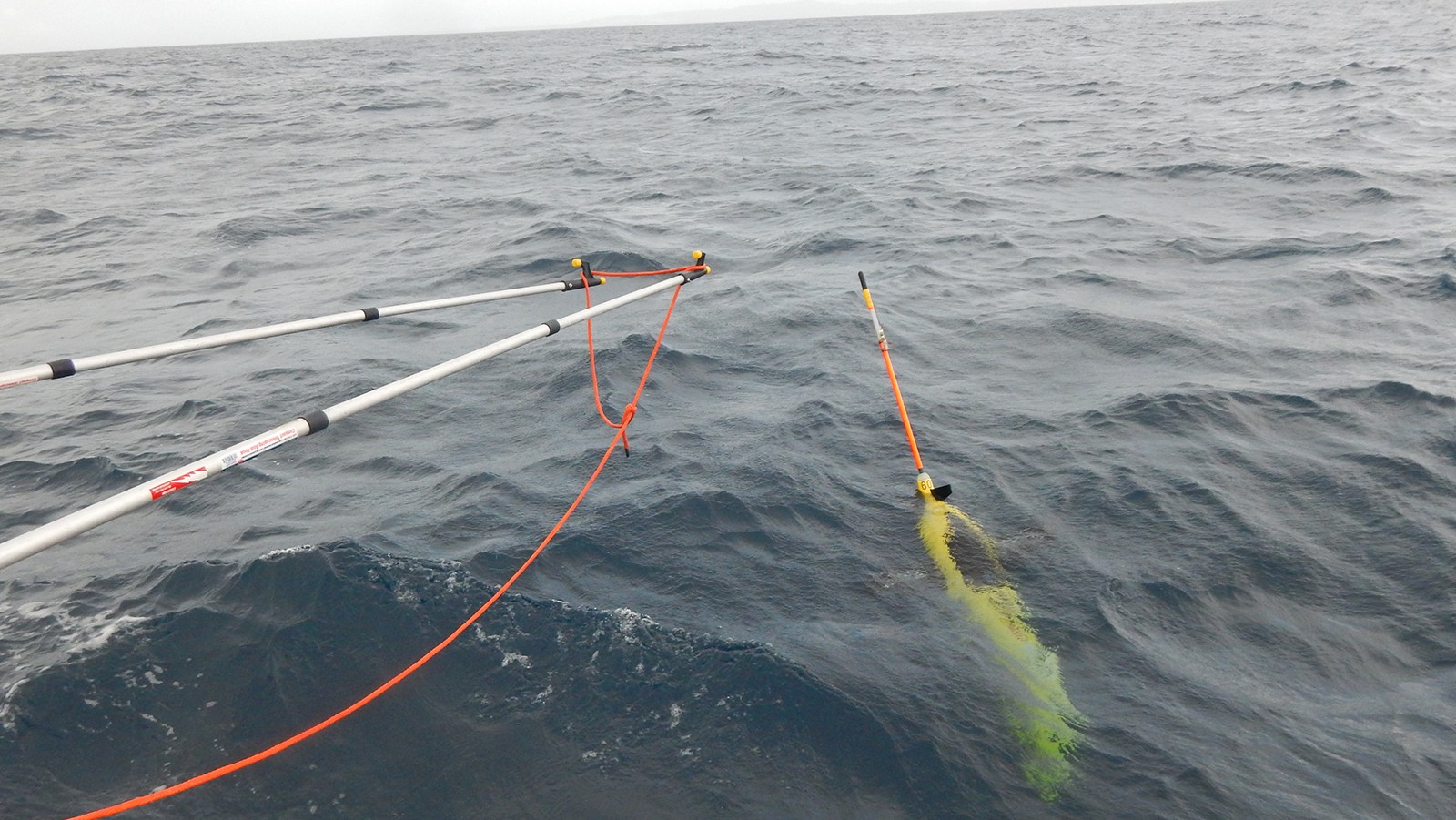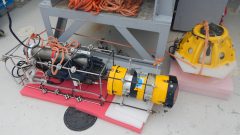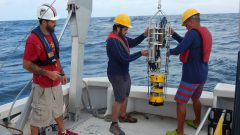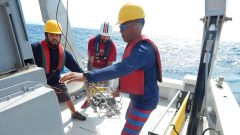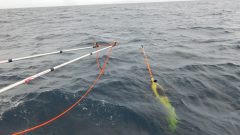On Thursday June 2nd, PHOD concluded its fourth underwater glider mission in the Caribbean Sea. Along with their partners at the University of Puerto Rico at Mayaguez, the glider was recovered from the R/V La Sultana. Since the beginning of AOML glider operations in July 2014, approximately 9000 temperature and salinity profiles have been collected in the Caribbean Sea and the Tropical North Atlantic. AOML’s underwater glider operations are carried out in support of tropical cyclone studies. The next deployments will be carried out in June and July, with two gliders in the Caribbean Sea and two gliders in the tropical North Atlantic Ocean.
Photo credit: NOAA
Image Captions
From Left:
- Glider recovered safely on deck. Photo Credit: NOAA.
- Scientists work to recover the underwater glider in the Caribbean Sea. This mission was concluded on June 2. Image Credit: NOAA
- Scientists work to recover the underwater glider in the Caribbean Sea. This mission was concluded on June 2. Image Credit: NOAA
- Glider located for recovery. Photo Credit: NOAA.
- Glider being recovered in the water. Photo Credit: NOAA.
- Underwater glider being recovered in the Caribbean Sea. Image Credit: NOAA
- Scientists work to recover the underwater glider in the Caribbean Sea. This mission was concluded on June 2. Image Credit: NOAA
- Scientists work to recover the underwater glider in the Caribbean Sea. This mission was concluded on June 2. Image Credit: NOAA
